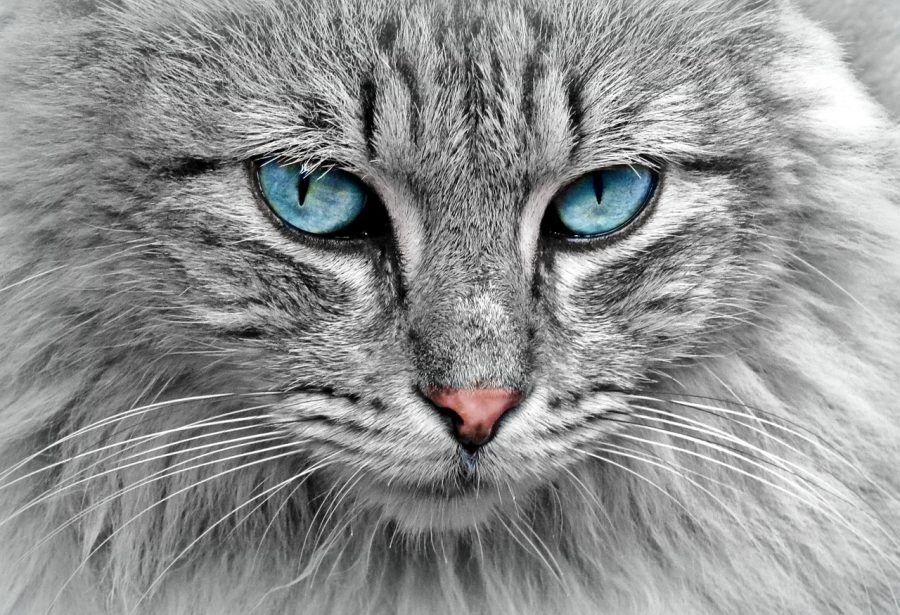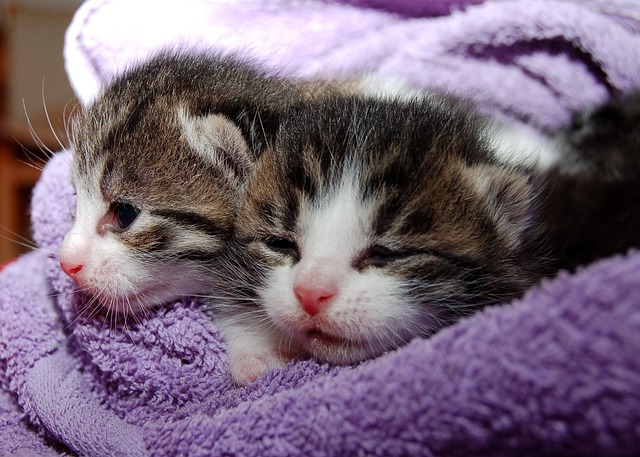

Smt. Maneka Sanjay Gandhi
A few days ago, someone wrote to me from Mumbai saying they lived next to a person who kept cat in his flat. They complained about the smell. I sent a team to the gentleman’s flat, thinking that he was that dreadful human subspecies- the hoarder. A person who piles on animals because he is mentally unsound and starves them to death while being a nuisance to everyone around. But he wasn’t. A sensible person who is regarded with great respect by everyone – including the woman who complained – he takes in animals that are hurt or ill. He nurses them back to health and releases them, gets them adopted or keeps them if they are crippled. All the cats were sterilized, clean and healthy. But there was a strong smell. The complainant was apologetic but she said she could not live with it.
This is the third or fourth case that has come to me from Mumbai about cat smells. Two sisters kept cats and this so infuriated the landlady, who lived next door, that she came in at night, destroyed their apartment while they were away at work and threw out the cats. They were left homeless. The landlady has to now give almost a crore in damages.
Cat urine odour is a problem. Let’s look at reasons and solutions. If you know anyone who has a problem, you could send this to them.
Cats do not hunt, eat or sleep in groups like dogs. They mark territories and avoid each other whenever possible. They have no systems for deciding face-to-face disputes, so, to avoid them, they communicate indirectly by leaving messages – one of which is urine marking. What area belongs to them and over what period of time, whether they want mates.
If their world is predictable, there are no conflicts, they are neutered and they don’t need a mate, cats have little reason to mark and probably will not. But, if they want a mate, or are distressed about something, they’ll deal with their distress by marking territory.
How do you make out urine marking?
Urine marks are usually sprayed on vertical surfaces. The cat backs up to a vertical object. like the side of a chair, a wall, or a stereo speaker, stands with his body erect and his tail straight up in the air, and sprays urine onto the surface. The urine smells pungent because it contains extra communication chemicals.
The more cats who live in a home, the more likely it is that at least one of them will urine mark.
This behaviour can be triggered by any change: new people, getting another animal, remodelling the kitchen, changing work hours, having a baby, even a new coat.

A cat is not challenged by another cat, he is stressed by his inability to deal with the intrusion. If a cat is prevented from avoiding the other cat, he will become increasingly stressed and mark often.
First, neuter all the cats. The best way to minimize conflict is to divide the food, water, litter boxes, in different places across the house, so no two of them are near each other.
Conflict can often be reduced simply by providing more perching areas so that all cats can have a place away from the others. Creating space can be as easy as clearing window sills or shelves, or purchasing multiperch cat trees.
The second problem is how to make sure the cats use litterboxes to urinate /defecate, rather than do it all over the house. Buy them from a pet shop. If the litter box is unclean then cats, being very fastidious, will not use it and then the whole house is used like a bathroom. Scoop the box daily. Dump out the litter, wash the box with soap and warm water (no ammonia-based cleaners), dry it and put fresh litter in. Try a litter deodorizer that can be either sprinkled or sprayed on the litter itself daily. Kitchen baking soda is non-toxic. Carbon litter box liners are helpful in bringing down such odours.
The rule is one litter box per cat, plus one. If you have one cat, you need two boxes. If you have four cats, you need five boxes. Keep the boxes in different locations in your home. Don’t put a box in a small enclosed area, like a tiny bathroom, closet or under the stair cupboard. which will concentrate the smells and make the cat feel trapped. A larger, well-ventilated area is best in a quiet area, away from your cat’s food, or anything that can startle your cat while he’s using the box.
At least 10% of all cats develop elimination problems. Some stop using the box altogether. Some only use their boxes for urination, or defecation, but not for both. Still others eliminate both in and out of their boxes. If your cat isn’t comfortable with her litter box, or can’t easily access it, she won’t use it.
Investigate possible medical issues like diabetes, kidney diseases, or urinary tract infections, that might cause her to eliminate outside of her box:
Other reasons: The box is too small for her. It has a hood or liner that makes her uncomfortable. The litter is too deep. Cats prefer one to two inches of litter. Cats who have grown accustomed to a certain litter, dislike the smell of another. Old cats, or cats with physical limitations, may have a difficult time using certain types of litter boxes, such as top-entry boxes, or with high sides.
The majority of cats prefer large boxes that they can enter easily. Plastic storage containers make excellent litter boxes. Most cats prefer clumping, unscented litter. Offer different types of litter in boxes placed side-by-side to allow your cat to show you her preference.
Some cats just like certain places, like carpets or bedding. Make these areas less appealing to stand on by putting rubber mats, plastic sheets, tin foil, or double-sided sticky tape.
If your cat has experienced some kind of frightening, or upsetting, event while using her litter box, she could associate that event with the litter box and avoid going near it. If she is afraid she will run into the box and leave again very quickly, sometimes before she’s finished eliminating. Or eliminate nearby, but not inside her box. In order for your cat to learn new pleasant associations, move the litter box to a new location, or add a few litter boxes in different locations. Pick locations with multiple escape routes so that your cat can quickly leave her litter box if she suddenly feels anxious.
Vary the litter. Use a finer or coarser texture. Leave treats and toys for her to find in the area leading to her box. Don’t put her food bowl next to the box because cats usually don’t like to eliminate close to their food.
Incorporate the use of sprays or diffusers that deliver a synthetic pheromone that has been shown to have some effect in relieving stress in cats.
Reduce the chances of your cat peeing at inappropriate areas: When your cat pees outside her litter box, instead of yelling or punishing her, immediately place her into the litter box. Do this every time she pees outside and pat her on the back when she pees in the litter box.
Despite all this, if the cat is urinating at places other than the litter box:
a) Blot up as much of the urine as possible with a cloth towel. Don’t rub the stain. If it’s dry, pour cold water on the stain, and blot. Avoid detergents with ammonia as this encourages your cat to mark the spot again. Make a water and vinegar solution for both old and new stains. 1 1/2 cups of warm water and a 1/2 cup of vinegar. Pour this concoction over the stain and soak for about 3 to 5 minutes.. After the water and vinegar solution is dry, sprinkle the area with baking soda (a lot). Let the mixture dry for a few hours. Once the spot is dry, vacuum the excess baking soda. If the stain is tough, repeat the entire process again.
b) Mix 3/4 cup of three percent hydrogen peroxide with 1 teaspoon of dish detergent. Sprinkle this solution over the baking soda and test a small spot, because sometimes peroxide can discolour fabrics. Work the baking soda into the fabric or carpet. Let the mixture dry. Vacuum after a few hours.
c) Make a Spray Bottle:
- 5 oz Baking soda
- 1 teaspoon White vinegar
- 1 teaspoon Hydrogen Peroxide
- Half a teaspoon of Orange essential oil.
Mix the ingredients in a bowl and put them in a spray bottle. Shake the spray bottle and spray the solution on the affected area and let it dry. The powdered dried solution can be vacuumed later. Repeat until you witness results.
d) Mix 1 cup of baking soda with six drops of an essential oil of lemon or any other citrus fruit. Sprinkle the mixture on the dry affected area and leave it overnight. Vacuum the area in the morning and the odour will be gone for good.
e) For walls and cement flooring, wash the area with an ammonia free cleaner and wipe it clean with fresh water. Mix ten portions of water to one portion of bleach solution and put it in a spray bottle. Keep yourself well protected by using gloves and keeping the area ventilated. Spray this mixture on the walls and flooring and let it sit for thirty seconds or so. Wipe it off with a clean damp cloth.
f) Wrap a couple of charcoal pieces into a newspaper and place them in the affected areas of the house, and keep the house well ventilated. Let them be for a few hours and the odour will disappear.
h) Non-toxic air fresheners are available from pet and health stores..
i) Plants, like spider plants, are effective at filtering ammonia from the air and removing bad odours.
j) Enzymatic cleansers, designed to neutralize pet odours, can be found at most pet stores.
k) Before washing your clothes, rinse the pee area with cold water. Add 1/4 cup of apple cider vinegar to the detergent. Dry in the sun.
l) If cats pee on potted plants, place a couple of orange peels on the soil. Cats hate the smell of oranges.
m) To cleanse the air in a room, leave an open cup of vinegar to neutralize any bad smells.








